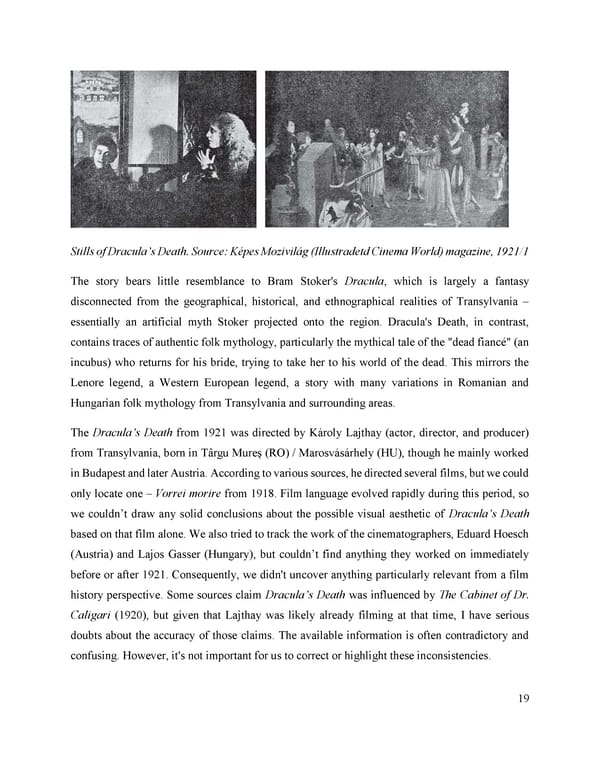Stills of Dracula’s Death. Source: Képes Mozivilág (Illustradetd Cinema World) magazine, 1921/1 The story bears little resemblance to Bram Stoker's Dracula, which is largely a fantasy disconnected from the geographical, historical, and ethnographical realities of Transylvania – essentially an artificial myth Stoker projected onto the region. Dracula's Death, in contrast, contains traces of authentic folk mythology, particularly the mythical tale of the "dead fiancé" (an incubus) who returns for his bride, trying to take her to his world of the dead. This mirrors the Lenore legend, a Western European legend, a story with many variations in Romanian and Hungarian folk mythology from Transylvania and surrounding areas. The Dracula’s Death from 1921 was directed by Károly Lajthay (actor, director, and producer) from Transylvania, born in Târgu Mureș (RO) / Marosvásárhely (HU), though he mainly worked in Budapest and later Austria. According to various sources, he directed several films, but we could only locate one – Vorrei morire from 1918. Film language evolved rapidly during this period, so we couldn’t draw any solid conclusions about the possible visual aesthetic of Dracula’s Death based on that film alone. We also tried to track the work of the cinematographers, Eduard Hoesch (Austria) and Lajos Gasser (Hungary), but couldn’t find anything they worked on immediately before or after 1921. Consequently, we didn't uncover anything particularly relevant from a film history perspective. Some sources claim Dracula’s Death was influenced by The Cabinet of Dr. Caligari (1920), but given that Lajthay was likely already filming at that time, I have serious doubts about the accuracy of those claims. The available information is often contradictory and confusing. However, it's not important for us to correct or highlight these inconsistencies. 19
 Lost Analogue: Exploring Film, Music, and Interdisciplinary Methods in Education Page 19 Page 21
Lost Analogue: Exploring Film, Music, and Interdisciplinary Methods in Education Page 19 Page 21